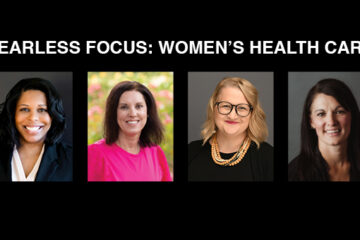By Max Mowitz, LGBTQ advocate and educator

In my work as an educator and advocate for the rights of LGBTQ people, the topic I get the most questions about is gender-affirming care.
Gender-affirming care and surgeries are lifesaving to the LGBTQ community, but there are ways that medical systems can be negative for transgender and nonbinary people. Gender-affirming care can mean so many things, but the gender-affirming care that most people are familiar with is medical gender-affirming care. This can include the use of hormonal and surgical treatments in addition to vocal training. These treatments are typically used to manage gender dysphoria, which is the feeling of discomfort or distress that might occur in people whose gender identity differs from their sex assigned at birth or sex-related physical characteristics.
Study after study demonstrates that access to gender-affirming care improves the lives of transgender and nonbinary individuals. Access to such care decreases rates of depression and improves transgender people’s overall well-being, according to 51 studies that do primary research on wellness in the transgender community.
In youth, the accessibility of gender-affirming care leads to better health outcomes. However, for all the good that access to such care imparts, we must hold two truths simultaneously: that gender-affirming care is lifesaving and essential and that there is deep complexity in the ways that transgender and nonbinary people choose to transition, medically or otherwise.
Our medical system is unable to reckon with this complexity, and this leads to a situation where the medical systems that made gender-affirming care possible are also the ones that treat the experience of being trans or nonbinary as something that needs to be fixed as opposed to something to be celebrated.
Untangling this requires understanding the history surrounding gender-affirming care. Harry Benjamin, who is often seen as the father of transgender care in the U.S., wrote “The Transexual Phenomenon,” which pathologized gender dysphoria as something that needed medical treatment, so long as the people needing the treatment fit certain diagnostic criteria.
The idea was that being transgender was something that needed to be fixed, and gender-affirming care was the way to make a transgender person “complete.” This new field of medical transition was groundbreaking and immediately started to change the lives of transgender people across the globe.
Unfortunately, this created with it a set of guidelines and standards that are still harmful to trans and nonbinary people today. The idea was this: Transgender people could transition, but only in ways that reinforced gender stereotypes. Transgender women, for example, could access the lifesaving gender-affirming care that they needed, but only if they acted like a “real woman” (in accordance with white, upper middle class standards) and only if they were interested in a very specific path of transition, including hormone replacement therapy and extensive surgeries.
Often, transgender women were denied care for simply wearing pants to a diagnostic appointment instead of a skirt because pants were seen as “too masculine” for women to wear. The assumption among these physicians was that those patients weren’t “actually” women, or that they hadn’t proven their femininity effectively enough to receive necessary care. However, we know that cisgender women (those who are not transgender) are allowed to wear pants all the time and their gender is never questioned. And although this example is from the 1970s, many of the same assumptions, spoken or unspoken, continue to influence the behavior of medical providers to this day.
So, while these lifesaving services are available, they are only available on the terms of the cisgender medical professionals who created them, and often within the confines of what cisgender professionals feel comfortable with.
Though there has been some improvement, many providers still expect trans and nonbinary people to “prove” their gender before receiving the gender-affirmation care they need. This is particularly harmful to nonbinary people, whose care, while just as important, often comes with a whole host of additional rules and expectations.
It should also be noted that many transgender and nonbinary people today simply don’t have access to this care because it’s entirely unaffordable, with top and bottom surgeries costing anywhere from $5,000 to $55,000. If a person happens to be insured, which many transgender and nonbinary people are not, it’s a shot in the dark whether it will be covered, or how much will be covered, or where it can be done. In Iowa, the Reynolds administration has denied gender-affirming surgeries to those on Medicaid, leaving many low-income people without options.
Ultimately, gender-affirming care should be a set of tools that trans and nonbinary people can use to manage dysphoria and improve their lives, not a strict set of rules that confine them to stereotypical gender roles. We must strive to make it widely available to people of all incomes and identities. Working toward an expansive and inclusive understanding of the many ways transgender and nonbinary people can transition is essential, and this acknowledgement of the complexity of transition and gender identity will ultimately improve the system for the people that need this care the most.
Max Mowitz is the program director at One Iowa, an LGBTQ advocate and educator, and an LGBTQ gender-affirmation doula, on their way to certification as a full-spectrum birth and postpartum doula. Max’s passion lies in working toward intersectional liberation of all oppressed peoples. Max is a power-lifter, harpist, abolitionist, and partner to Austin and June.


